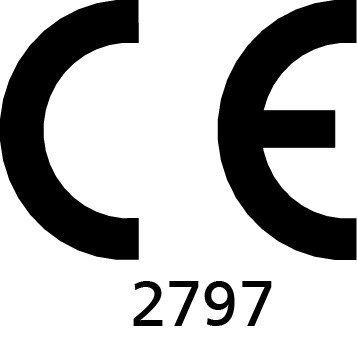Are surgical blades and scalpels made from Carbon or Stainless Steel ?
Surgical Blades can be manufactured from either Carbon Steel or Stainless Steel both of which have to comply with the requirements of BS 2982:1992 and BS EN ISO 7153 Part 1 specifying the hardness required for each blade as well as the material composition.
The hardness of the blade is determined by the heat treatment process and it involves striking a balance between hardness and flexibility. A marginally softer stainless blade tends to be more flexible however this can arguably lead to quicker edge deterioration during use.
The stainless blade however has better anti corrosion properties which makes it a more suitable blade for a disposable scalpel given the way it is packaged and typically used in more uncontrolled environments or for procedures which use copious amounts of saline solution which would cause an immediate rusting action when contacting the surface of a carbon blade.
Carbon steel, because of its properties, offers what Swann-Morton believe is the best combination of initial sharpness and durability and this is an opinion shared by many end users and is reflected in the volume of Carbon blades consumed annually each year compared to our Stainless blades.
Both types of blades are very high quality and will perform effectively however personal preference is developed over many years of usage.
Do you offer a guarded scalpel ?
The scalpel guard or protector was first developed by a number of manufacturers to prevent them from piercing the foil or paper packets in which they are supplied thus compromising the sterility of the product.
The Swann-Morton scalpels are presented in a substantial pre-formed passing tray and are located on a securing point at the back end to ensure they do not move once in the packet thus offsetting the need for a guard.
Over time the guard or protector has been perceived as a safety feature to assist with sharps injury prevention however in many markets the resheathing of sharps is frowned upon by health and safety teams and seen as actually increasing the risk of injury.
We do however still offer a range of sterile scalpels with a guard as an alternative to our standard sterile range. We also offer bulk non sterile scalpels for the Kit and Tray manufacturers.In this case the guard protects the kit assembly team from potential sharps injuries and also prevents the scalpel from damaging other component parts of the kit or tray.
How are surgical blades made?
That is to remain a secret. There is a film available on YouTube that was commissioned by the Discovery Channel around ten years ago that features our company.
The How it is Made programme has now had in the region of 2.5 million views but as you can guess technology has moved on since then.
The programme does however provide an insight into the process itself and the amount of quality control that each and every blade is subjected to too guarantee the Swann-Morton consistency and reliability.
How sharp are surgical blades and scalpels ?
Sharpness is a perception and is usually measured by whether or not the blade or scalpel being used is perceived to be adequate in performing the task at hand efficiently. This is impacted by numerous variables including the age,type and ethnicity of skin, the surgical site, close proximity with bone, minimal invasive or open surgery, elective or emergency procedures, etc.
There is also a balance between initial sharpness and durability. Do you want the blade to make a single incision or to last for numerous cuts during a major surgical case that can last for hours? Then you have to factor in different cutting edge technologies, coatings, grinding angles etc. all of which will impact on performance under specific usage conditions.
There can be benefits and disadvantages to all these facets depending on the area of surgery and procedure being performed.
Swann-Morton aim to manufacture a consistent, reliable cutting edge across their various shapes and product ranges which will deliver, what we perceive to be, the best combination of initial keenness and durability to a vast array of end users.
I am currently writing a book on postmortem in which I am mentioning your PM40 blade and other blades. Can you please tell me why these are called PM40 ?
Dear Professor Aggrawal, the 40 stands for "40 thou" (40 thousandths of an inch = 1mm) which is the thickness of material from which the blade is manufactured.
Please advise the correct handle to use for the 0420 stitch cutter blades?
The Standard (0420), Midi (0422) and Long (0421) Stitch Cutters were designed to use without a handle although in today's World of increasing concerns over sharps related injuries one can sympathise why this may not be deemed as safe practice. The No.3 or "Baby" stitch cutter (0326) can be used with a No.3 handle whilst our safety Stitch Cutter (3926) is also very popular here in the UK.
What is so unique about the single use Blade Removal device?
Most Blade Removers are multiple use or box types which run the risk of cross contaminating the handles as they remove the blades. They should therefore not be taken into the Operating Room itself.
The Swann-Morton single use blade remover is presented individually in a sterile pack which can be taken to the point of the procedure.
Each remover is used once and safely encapsulates the contaminated sharp so there is no additional handling.
The unit is transparent to assist with the blade count afterwhich it can be disposed of in an approved sharps container.
What is the Cygnetic range?
Cygnetic is a relatively new range of blades which fit a unique handle designed in house by Swann-Morton. The blades have more lateral strength than a standard surgical blade due to the combination of the material and special handle fitment which makes them more suited for cutting within joints during Orthopaedic procedures.
The blades can literally be dropped into the handle and are locked into place using the simple lever mechanism.
For blade changes during or at the end of the procedure the lever is opened which then allows the blade to drop into a blade counter or waste box so no-one has to handle the contaminated sharp. The handle itself can be simply dismantled for cleaning and then reassembled ready for the next patient.
More details along with cleaning and usage instructions can be found here.
What is the idea behind the Retractable Scalpels?
The retractable scalpel was designed in the USA to enhance and encourage protocols covering the safe passing of sharp's within the Operating room.
The OSHA regulations which are statutory in many States within the USA places a legal responsibility on each facility to provide safety devices wherever possible.
The Shackelford scalpel features a rear passing position, a forward usage position and a final back locked position for safe disposal. The scalpel should always be in the passing or locked position when being passed between the staff in the O.R. especially if hand to hand.
Please see our training films and product section for more information on this product.
What is the most popular blade shape?
The No.15 blade. We manufacture in the region of 450,000 - 500,000 per day.
Why are there so many different handle options ?
The handles we offer may be range specific such as the Fine or Post Mortem however the handles which fit the main range blades come in all shapes and sizes.
The No.3 fitment handles including the 3, 3L, 5B, 7 , 9 and B3 fit the small size shapes from 6 to 16 and including 40.
The No.4 fitment handles including the 4, 4L and 6 fit the large blade shapes from 18 to 36.
The most commonly used handles are the 3 and 4 whilst the 3L and 4L provide extra length and reach for deep surgery. There are small thin handles like the 7 and 9, bulbous handles such as the 5 and 6 and more ergonomically designed handles such as the B3.
Which handle is actually used will be determined by the surgeons own preference in relation to the procedure being performed.
Why are there so many shapes of surgical blades and scalpels ?
If you look back to the origins of surgery there are common shapes of knives which can be identified. Some have straight edges, some have rounded edges and others are hooked. These shapes formed the foundation of todays range of surgical blades and scalpels.
As surgical techniques have become more refined and more intricate the demand for slight variations in shape have been the catalyst leading to and ever expanding offering.
Today there are 32 different blade shapes in the standard blade range and this is before one considers the more specialised ranges such as Fine and Cygnetic.
Why have you moved away from Nickel towards Stainless for the Handles?
Traditionally we offered both Nickel alloy and Stainless steel handles however the price of Nickel began to increase as did concerns over nickel allergies amongst staff and patients.
Nickel also stains and discolours when autoclaved and although this is only an aesthetic problem it can make the handle appear unclean. This staining can also contaminate other stainless instruments if cleaned within the same unit and cycle.
Taking these issues into consideration and combined with new advances in Stainless handle manufacturing technology the decision was made to move away from Nickel so that all our handles are now manufactured in Stainless steel.
Why is there a graduated measure on some of the handles?
This was initially a requirement for the USA but has grown in popularity in other market areas.
The measure is not validated and is only for guidance however it can provide perspective and scale during training to assist in identifying the position and the size of an incision for a specific surgical procedure.
It has also started to play an important role in trauma surgery when compiling forensic evidence to be used in court which references the size, depth and location of wounds.
Why is there a need for safety devices?
Even with safe passing protocols in place accidental sharps injuries can still occur.
The concept of safety devcies is to assist in the reduction of accidental sharps injuries and the risk of cross infection amongst both patients and staff.
They should enhance safe passing and contaminated sharps disposal protocols not replace them.
Why is there a range of surgical blades attached to a plastic handle ?
The handle is actually MIPS (medium impact polystyrene) and the answer is for convenience.
The disposable scalpels, as they have become known, were historically used in less controlled environments outside of the Operating Room itself so it was considered more convenient and probably safer to have the blade already attached to the handle.
They are also used in emergency departments and in trauma situations out in the field where time is of the essence and to start trying to fit the blade to a handle at the scene of a major incident is both time consuming and definitely not practical.
The whole scalpel is disposed of after use.
Would you be able to tell me if the PM40 post mortem blades come with a handle?
If you go to the link below you can view details on our full PM range.
http://www.swann-morton.com/product_range/10.php
We have the PM Disposable Scalpel with the PM40 blade already mounted onto a plastic handle with a protective guard then other than that we have the PM40 range that has a choice of two screw fitting handles and the PM60 range blades which fit a No.8 handle in a similar fashion to a standard blade.













